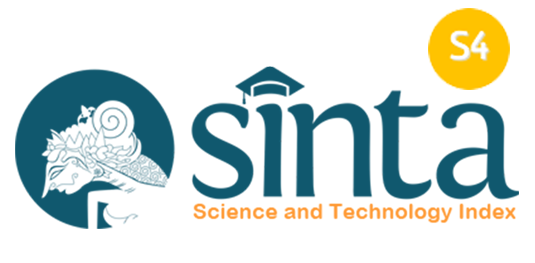Exploring numeracy teaching and learning by using ethnomathematics
Abstract
The purpose of this study was to explore the impact that the cultural or everyday practices of ethnomathematics of a particular cultural group will have if they are used in teaching and learning of numeracy concepts related to geometrical shapes. It explored cultural practices, artefacts, written, verbal or visual communication messages reflecting mathematics in order to see how they could best eliminate the problems learners encounter in the acquisition of numeracy language. Data was generated using observations, brainstorming and interviews. Based on this research, the impact of using ethnomathematics in numeracy teaching and learning brings in innumerable benefits. These include promoting deep learning and allows teachers to maka use of prior knowledge in the classroom. This allows learners to recall and relate to the concepts learnt and employ them in their daily activities so that they do not to remain inert. Another impact of interest was the reclaiming of names of geometrical shapes from certain languages which currently teachers are not aware of as they are overlooked. For instance when geometrical shapes were first discussed using local terminology, it made more meaning than when taught using English used as a medium of teaching and learning in the research area.
Full Text:
PDFReferences
Aksoy, G. (2005). Epistemology and psychotherapists: Clarifying the link among epistemic style, experience, and therapist characteristics. Unpublished Master of Science thesis, University of Florida, Florida.
Andrews, T. (2012). What is social constructionism? Grounded Theory Review: An International Journal, 1(11), 39 – 46.
Arnold, M. (1867). Culture and anarchy. Cambridge: Cambridge University Press.
Biggs, J. (1999). What the student does: Teaching for enhanced learning, Higher Education Research & Development, 18(1), 57-75.
Beck, A. T. (1976). Cognitive therapy and the emotional disorders. New York: International Universities Press.
Benoit, E. (2012). The artistic perspective. San Diego: Eudaimon Press.
Boas, F. (1940). Race, language and culture. New York: Macmillan Company.
Cole, F. L. (1988). Content analysis: Process and application. Clinical Nurse Specialist, 2(1), 53–57.
Davidson, L. (2012). Cultural genocide. New Brunswick: Rutgers University Press.
D’Ambrosiio, U. (1991) Ethnomathematics and its place in the history and pedagogy of mathematics. In M. Harris (ed) Schools, mathematics and work. New York. Academic Press.
Dickerson, V. C. (2010). Positioning oneself within an epistemology: Refining our thinking about integrative approaches. Family Process, 49(3), 349 – 368.
Elo, S. & Kyngäs, (2008). The qualitative content analysis process. Journal of Advanced Nursing, 62(1), 107–115.
Hale. E. (2013). From inert knowledge to activated knowledge: Practical ideas for improving student learning. Philosophy Study, 3(4), 312-323.
Masingila, J. O. (1993) Learning from mathematics practice in out of- school situations. For the Learning of Mathematics, 13(2):18-22.
Meissner, S. N. (2018). The moral fabric of linguicide: Un-weaving trauma narratives and dependency relationships in indigenous language reclamation. Reconciliation, Transitional and Indigenous Justice, 14(2), 266 – 276.
Mouraz, A. Pereiro, A. V & Monteiro, R. (2013). The use of metaphors in the processes of teaching and learning in higher education. International Online Journal of Educational Sciences, 5(1), 99-110.
Mukwambo, M. (2017). Exploring and expanding situated cognition in teaching science concepts: The nexus of indigenous knowledge and Western modern science. Unpublished doctoral thesis, Rhodes University, Grahamstown.
Muller, J. (2008). Forms of knowledge and curriculum coherence. Journal of Education and Work, 22(3), 205-226.
O’Donoghue, J. (2002). Numeracy and mathematics. Irish Mathematics Society Bulletin, 48, 47–55.
Odora-Hoppers, C. A. (2001). Indigenous knowledge systems and academic institutions in South Africa. Perspectives in Education, 19(1), 73-83.
Orgill, M. K. (2013). How effective is the use of analogies in science textbook. In M. S. Khine (Ed.). Critical analysis of science textbooks: Evaluating instructional effectiveness. Springer.
Pellegrino, J. W., & Hilton, M. L. (2012). Education for life and work: Developing transferable knowledge and skills in the 21st century. Washington, DC: National Academies Press.
Royce, J. R. (1973). Epistemic styles, individuality, and world-view. Princeton: Educational Testing Service
Saferstein, J. A. (2006), The relationship between therapists’ epistemology and their therapy style, working alliance, and use of specific interventions. Unpublished doctoral thesis, University of Florida, Florida.
Snævarr. S. (2010). Metaphors, narratives, emotions: Their interplay and impact. New York: New Directory Publishing Corp.
Spencer-Oatey, H. (2012) What is culture? A compilation of quotations. Retrieved from
http://www.warwick.ac.uk/globalpadintercultural
Surovtsev, V. A., & Syrov, V. N. (2015). The cognitive role of metaphors in processes of cultural production. Procedia - Social and Behavioral Sciences, 2000 (2015), 130 – 134.
Tyler, E. B. (1871). Primitive culture. London: John Murray.
Van Hiele, P. M. (1986). Structure and insight. New York: Academic Press.
Yero, J. L. (2002). Teaching in mind: How teacher thinking shapes education. Hamilton, MT: Mind Flight Publishing.
Xu, X. (2010). Interpreting metaphorical statements. Journal of Pragmatics, 42(6), 1622- 1639.
DOI: https://doi.org/10.18860/ijtlm.v6i2.10592
Refbacks
- There are currently no refbacks.
Copyright (c) 2023 Muzwa Mukwambo, Africa Zulu, Manyando Kayangula

This work is licensed under a Creative Commons Attribution-NonCommercial-ShareAlike 4.0 International License.
Indexed by :
.png)
.jpg)
.png)

.jpg)


